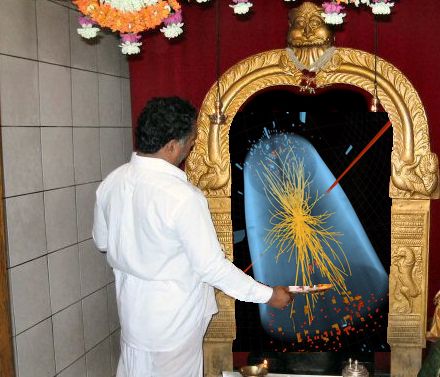Talking generally about the movie, it follows the trade mark style of Yash Chopra. However, a weak plot and screenplay ruins the day. I found a number of things in this movie, which could have been avoided or improved. At few places, minor details were not really cared for by the director and/ or editor.
- In one of the initial scene of the movie, Anushka Sharma is shown to be jumping in a freezing lake in Ladakh, only to be saved by SRK. The movie later reveals that she is a good deep sea swimmer. Is a well trained swimmer, not supposed to know, that he/ she can or can not swim in such kind of conditions?
- The same scene also shows SRK leaving behind his army jacket (with his name plate on it) along with other equipments with Anushka Sharma and leaving the scene in a jiffy. Does army issues uniform and such equipment to soldier whenever they demand it, and without seeking any clarification?
- In another scene Anushka starts to reads a personal diary of SRK, which starts with "Meri Zindagi ki...", however the background voice of SRK narrates the same as "Meri life ki...". Hello editors? were you sleeping?
- A scene, where the fiance of Katrina is making presentation to room full of people. People listening to the presentation have their respective laptops screen open, but for some strange reasons they have forgotten to switch on their laptops.
- The basic point, around which the whole plot of the movie is built seems to be very illogical. Katrina strikes a deal with 'Sir Jesus' to save the life of SRK (after he meets an accident) and in return she will never ever meet him. Surprisingly, the lady backtracks on her part of the deal 10 years later, for which director has not been able to convince the audience.
- SRK is shown to be doing the odd jobs in London such as snow cleaner, vegetable vendor, waiting at restaurant, singing on streets, which surely indicate lack of skills. However, after breakup with Katrina he decides to return to India not only to be enlisted as an 'officer' in the Indian army, but also goes on to become such a celebrated bomb disposal expert that Indian Army wants him to be part of a Discovery TV documentary in order to encourage youngsters to the profession. The later portion of the movie also indicate that age of SRK when he leaves London was 28 years. I am not sure if Indian army would recruit people at this age.
- SRK's room mate in London is a Pakistani, again with no skills and no job. But once SRK gives him a handful of pounds while leaving London, he surprisingly becomes proud owner of a big restaurant in London. Choosing a Pakistani room mate is also not logically shown, as usually an Indian-Pakistani friendship in a movie is used to promote the Indo-Pak bhai-bhai philosophy, which is not shown properly here.
- SRK never wears safety suit while working on most difficult of the bombs and has successfully disposed close to 100 bombs. Army discipline and protocol gaya tel lene.
- SRK initially warns Anushka Sharma (A Discovery Channel intern) to be at a distance of 200 ft (or may be it was 300 ft) from the bomb. However, after a few days his confidence on her grows and she invites her to come as close as half feet to the bomb, and not surprisingly not insisting on the lady to wear a safety suit.
- A scene depicting bomb scare at a tube station inside train in London, shows police clearing the area, and SRK walk in (police personals are not able to stop a single man) and disposes the bomb, much to the surprise of the man in charge. Agreed that SRK is the king of Bollywood, but you keep to show some difference between the Scotland Yard and Indian Police.
- The end seems very simple and boring (Happy Endings types...). It could have been a more twist. For example, when he comes to Katrina after disposing a bomb, and is called by his colleague for attending another bomb, the second bomb could have been shown to go off.
- The censor board certificate at the beginning shows the movie length at 179 minutes. The slow pace of the movie and 179 minutes makes the movie a bit uninteresting at few places and compels you to look at your wrist watch again and again.
- Although, composed by A R Rahman, the music of the movie is not so great except for that Punjabi songs, in which SRK runs around the streets of London dancing and singing around with his cover less guitar and has goras enjoying and gyrating with him.
- Intimate scenes between SRK and Katrina look artificial, seem not planned properly. No wonder, SRK has recently commented that he was forced to kiss Katrina, which shows the reason for above argument.

